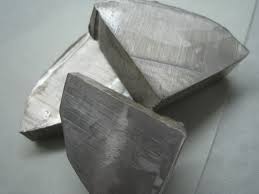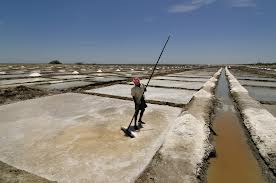

| Symbol: | Na |
| Melting point: | 97.72°C |
| Electron configuration: | [Ne]3s1 |
| Atomic number: | 11 |
| Atomic mass: | 22.98977amu |



| Ore | Common Name | Formula |
|---|---|---|
| Sulphates | Thenardine | Na2SO4 |
| Mirabilite | Na2SO4 | |
| Glauberite | Na2Ca[SO4]2 | |
| Nitrate | Soda-Nitrate | NaNO3 |
| Carbonates | Thermonatrite | Na2CO3,H2O |
| Natron | Na2CO3,10H2O | |
| Trona | NaH[CO3]2,H2O | |
| Gaylussite | Na2Ca[CO3]2,5H2O | |
| Borates | Borax | Na2B11O4,10H2O |
| Ulexite | NaCaB5O9,8H2O | |
| Chloride | Rock salt, Halite | NaCl |
| Fluoride | Cryolite | Na3AlF6 |
Sodium is highly reactive element. It does not occur in free state in nature. Sodium is a soft silvery white metal. It is easily tarnished in atmospheric condition. It dissolves in water very easily. Sodium forms 2.8% of the earth crust. Sodium chloride or common salt is the most important item of sodium. It is used largely in food preparation, food processing and production of industrial chemicals. It is available in sea water in sufficient quantity. Common salt is extracted from the brine of sea water. In addition to sodium chloride, sodium carbonate, sodium bicarbonate and sodium hydroxide are also used for regular uses. Sodium carbonate or washing soda is used as detergent material. Sodium bicarbonate is used as medicine and baking powder. It is also used as reagent and fire extinguisher. Sodium hydroxide is used in oil refining works. It is also used for extraction and purification of aluminium. It is also used as cleaning agent for machines and metal sheets. It is used in bleaching of cotton and rubber. Sodium compounds are used in manufacture of glass and ceramics. Sodium is also used for producing sodium peroxide, sodalime, sodamide and sodium cyanide. Sodium is used for production of reducing agents like amalgams. It is also used in the production of lighter alloys. Sodium is present in many rock forming minerals like zeolites, anorthoclase, amphibole, pyroxene, nepheline and sodalite. Borax and ulexite are extracted for production of Boron. Cryolite is used for electrolysis for extraction of aluminium.
Sodium is extracted by electrolytic methods. Two methods are mainly in use
Castner's process
Sodium is extracted by electrolysis of fused caustic soda. Caustic soda is put in the castner cell. The castner cell is a cast iron container. An iron gauge with cylindrical shape
is suspended from the top. It is used as a cathode. A hollow cylindrical nickel coated anode is suspended from the top of the cell. It is covered with an asbestos gasket. The cell
is filled with molten caustic soda. The current is switched on and electrolysis is started. The sodium hydroxide is broken in to sodium, oxygen ,and hydrogen. The liberated sodium
floats to the surface and collected in the metal cylinder. The sodium metal is removed regularly and kept under kerosene oil. Excess of oxygen and hydrogen move out through
the exhaust pipe. Water formed in the process is evaporated due to heating of the cell.
Down's process
Sodium is extracted from fused sodium chloride. The electrolytic cell is made of steel and lined with refractory bricks. A circular graphite rod rises
through the bottom of the container. The graphite rod functions as anode. It is surrounded by two semicircular iron cathodes on two sides. Sodium chloride
is taken 40% and calcium chloride is kept at 60 % of the mixture. This may reduce the melting temperature. On passing of electric current the electrolysis is started.
The chlorine gas is liberated at the graphite anode and removed through an outlet. Sodium rises from the cathode and collected in a receiver.
The process is continuous and fresh salt is added to maintain the level of molten electrolyte. This helps in separation of sodium and get collected in the receiver.
The sodium collected is kept in kerosene oil.